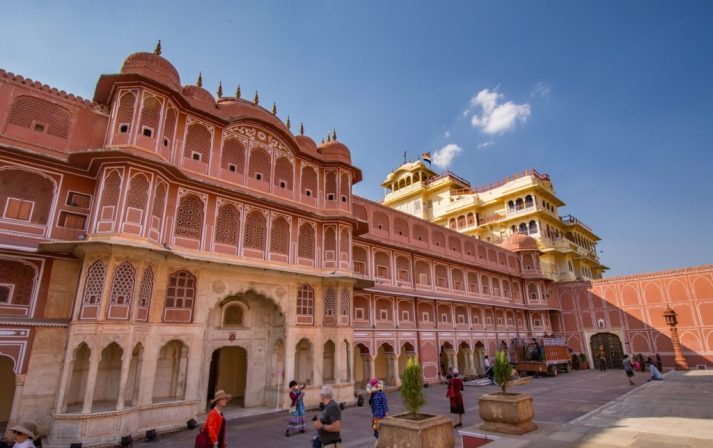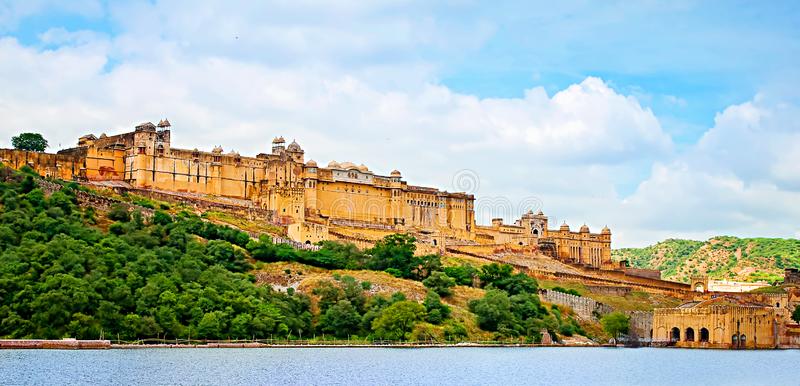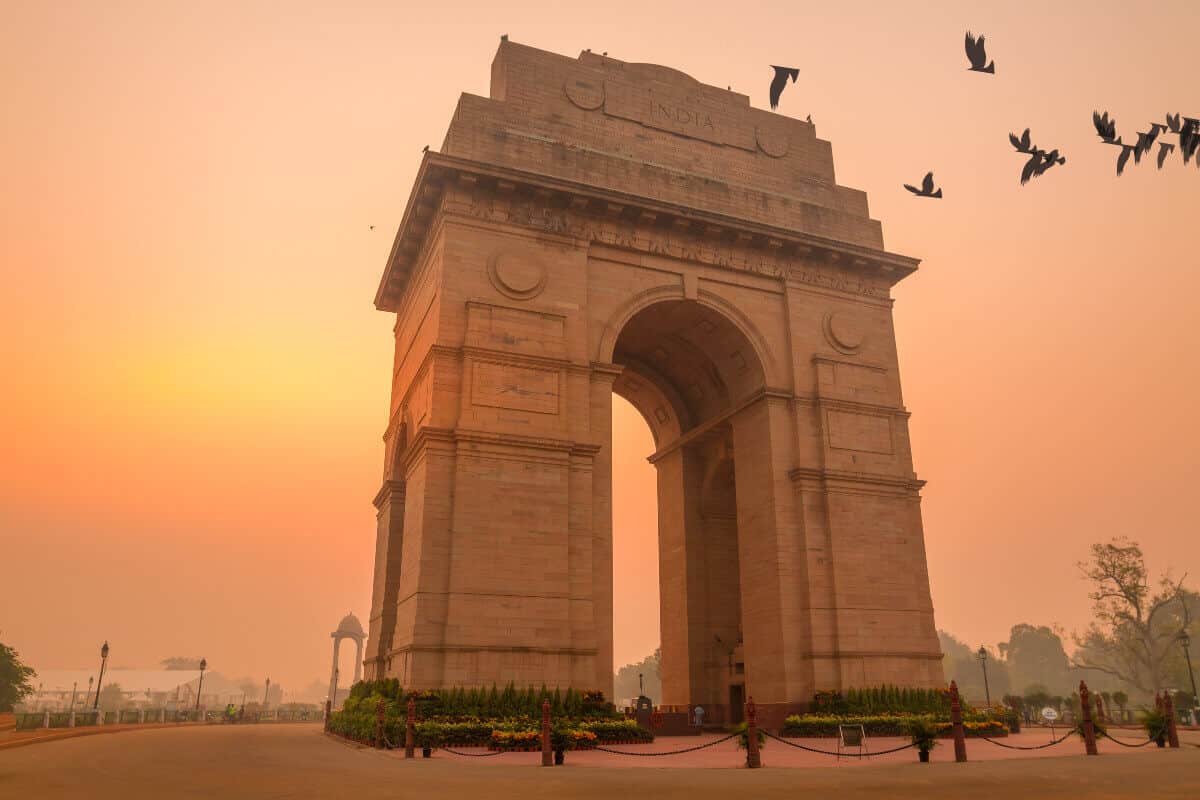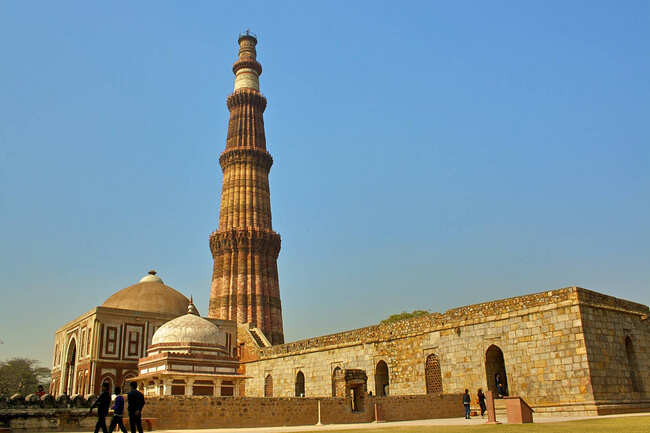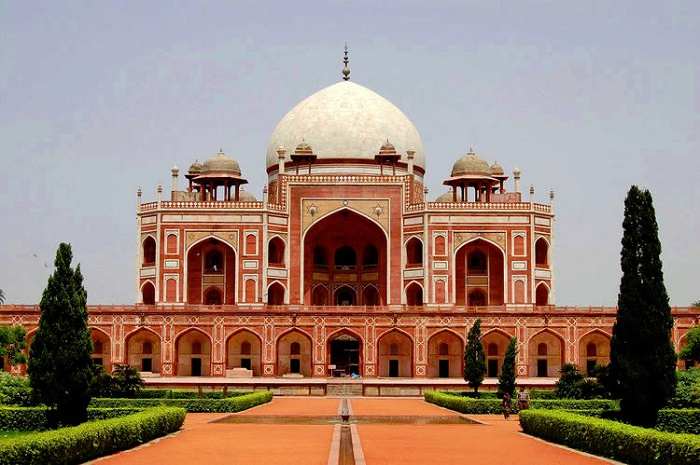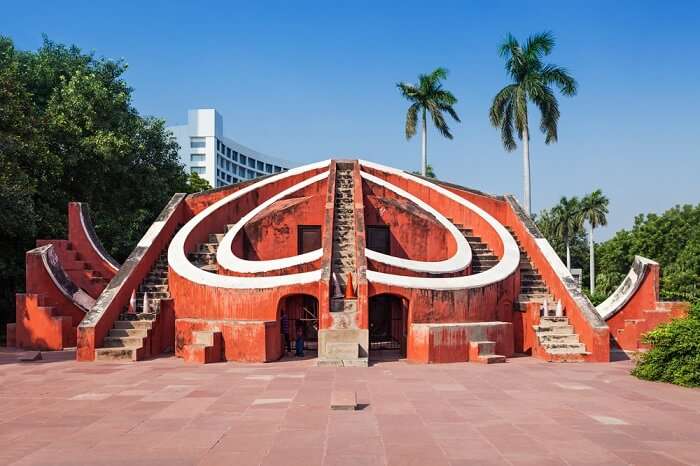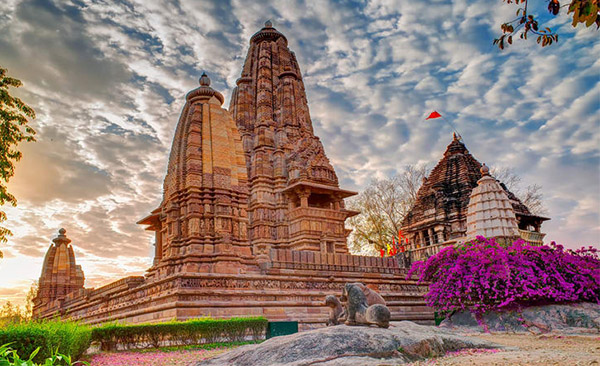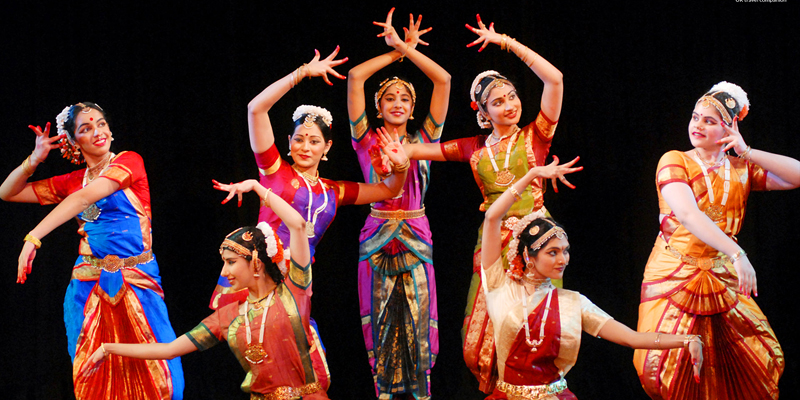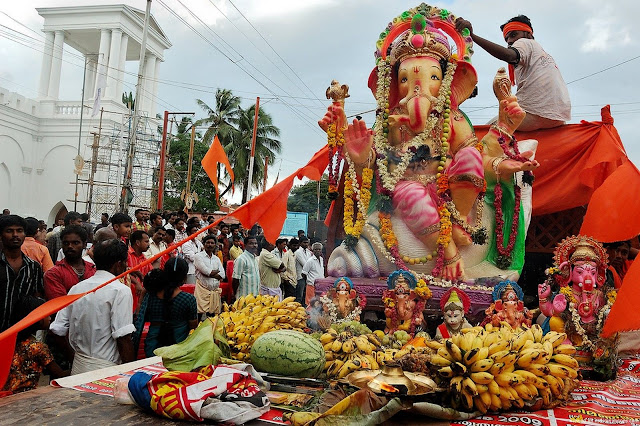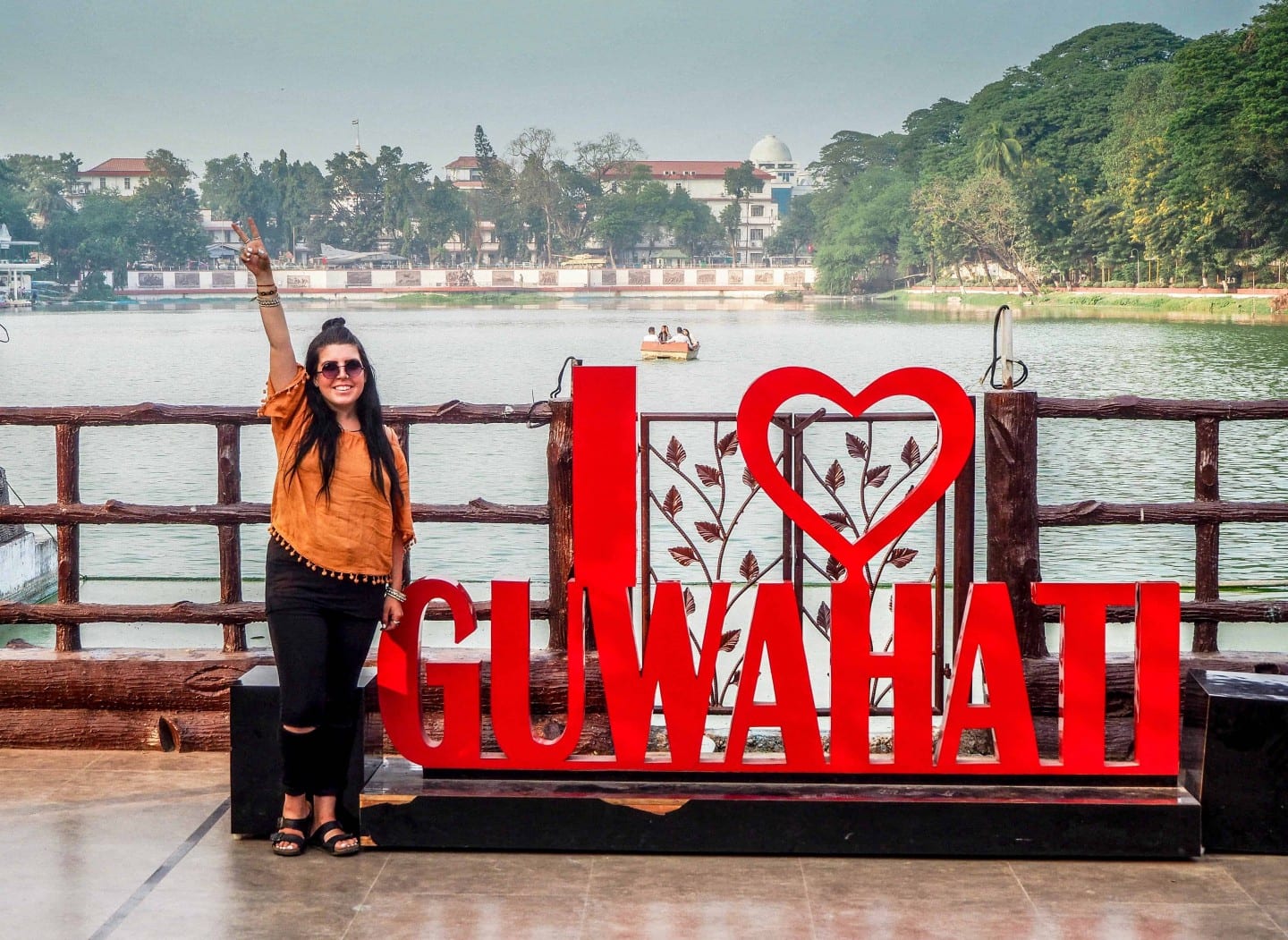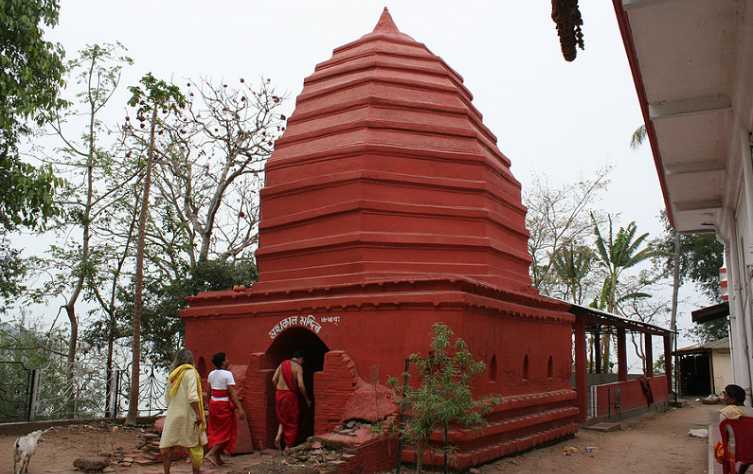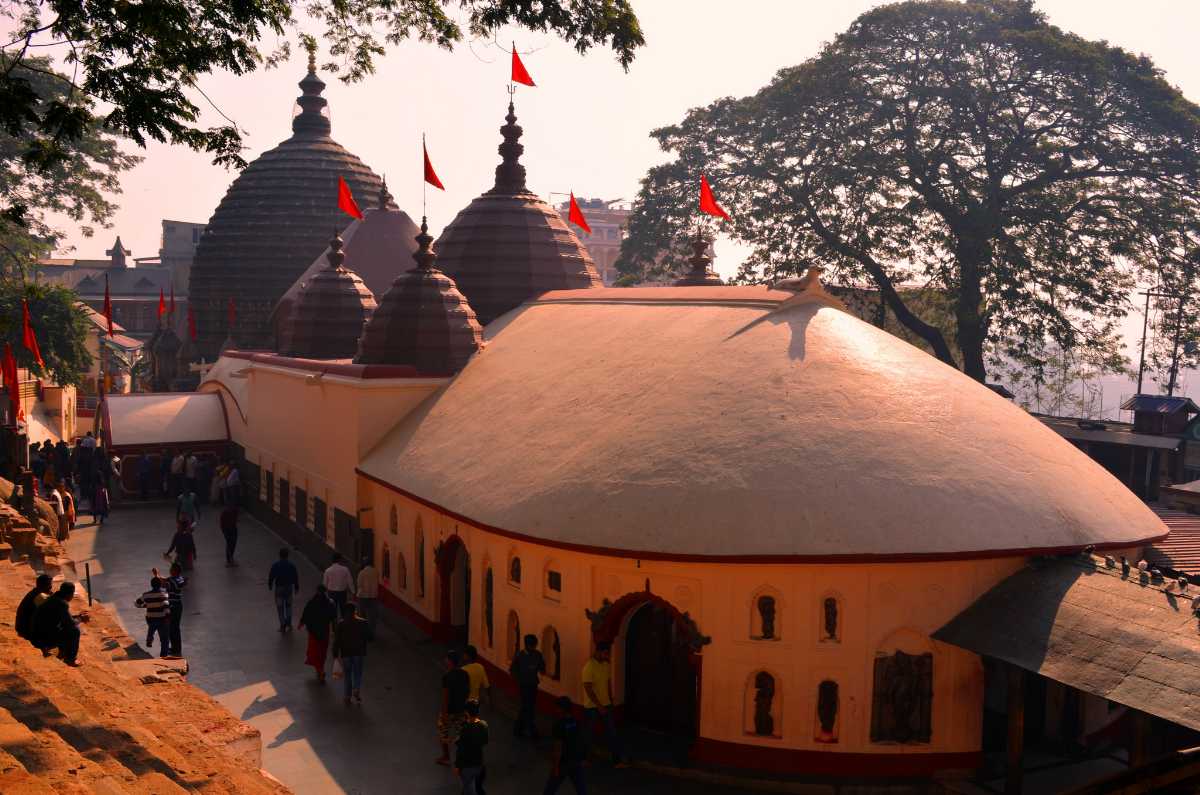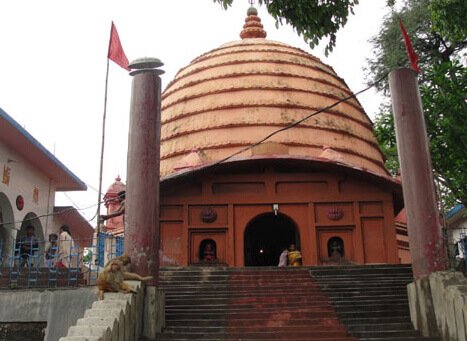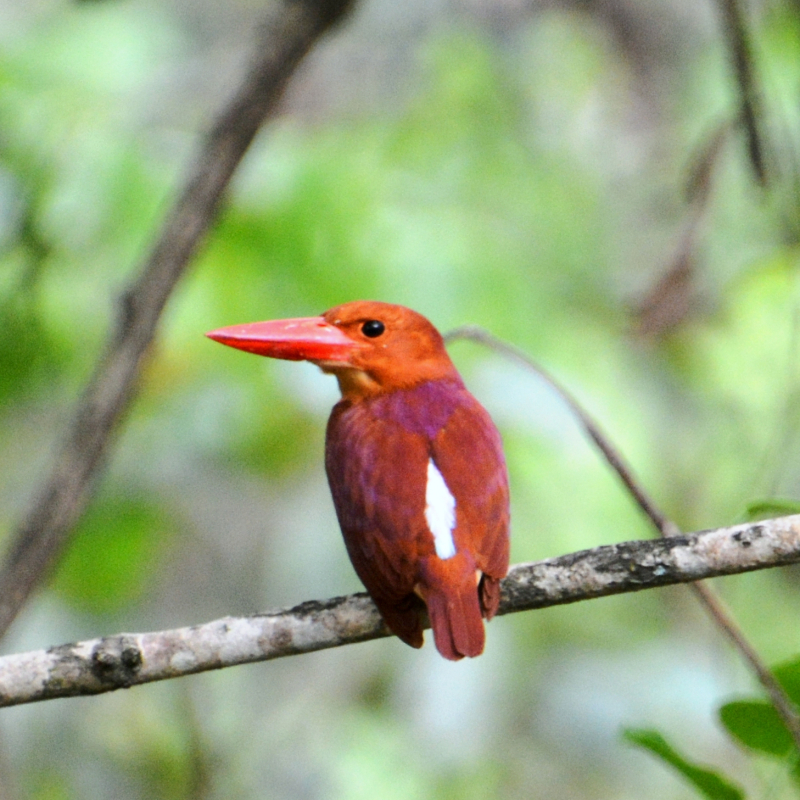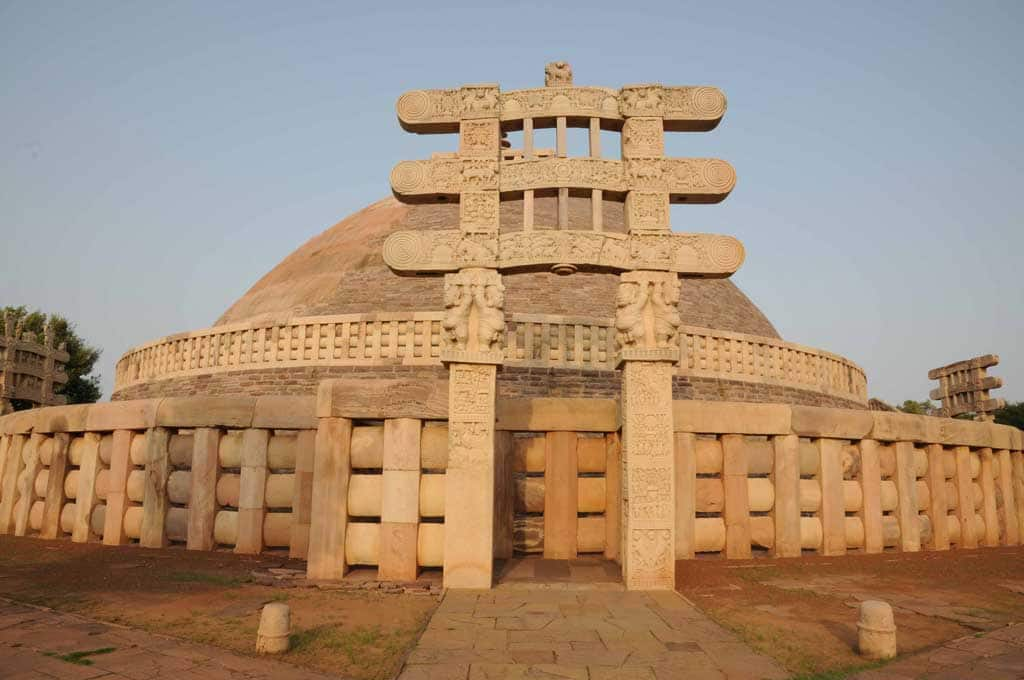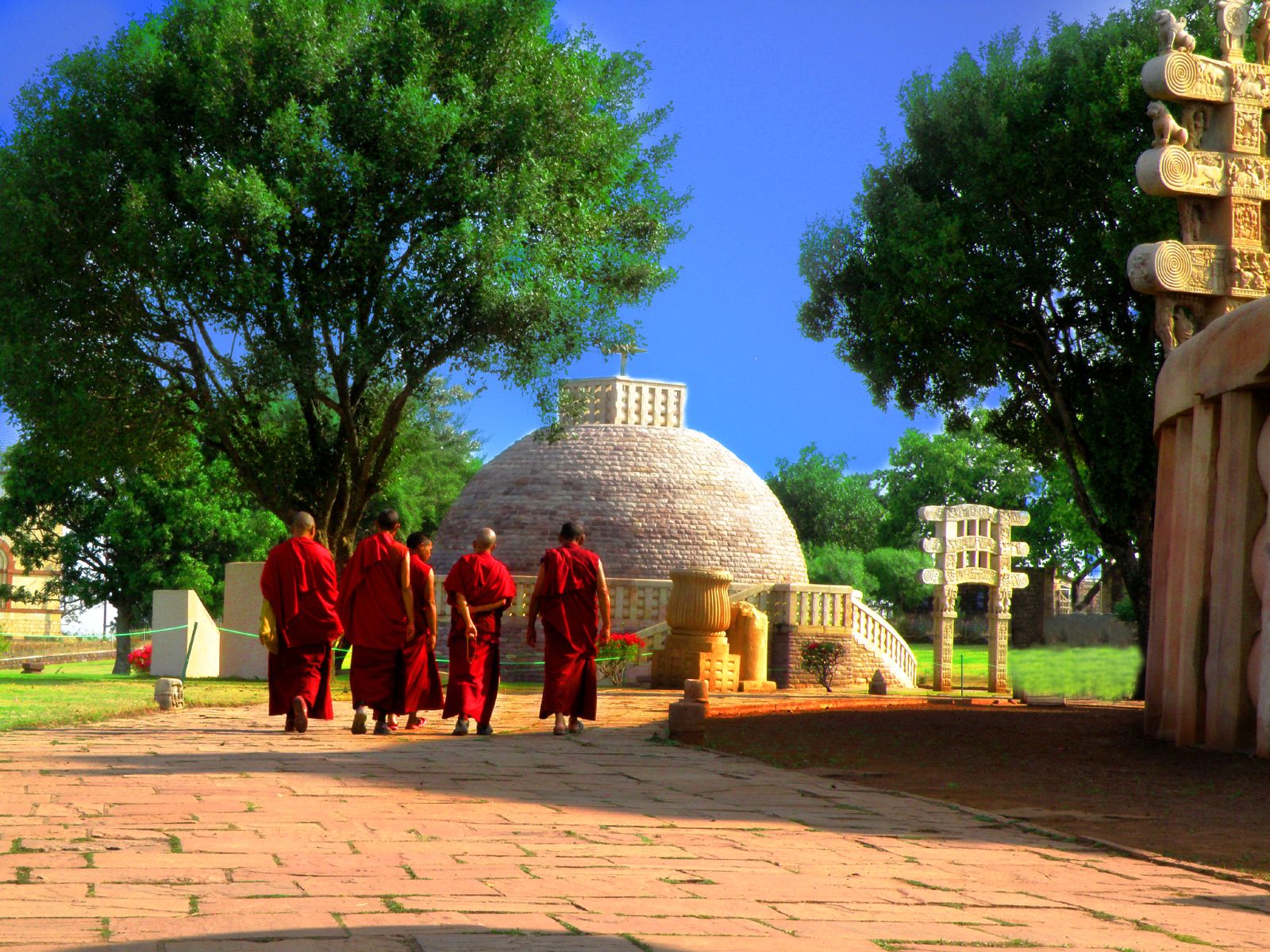Navaratri is a
Hindu festival that spans nine nights (and ten days) and is celebrated every year in the autumn. It is observed for different reasons and celebrated differently in various parts of the Indian subcontinent. Theoretically, there are four seasonal Navaratri. However, in practice, it is the post-monsoon autumn festival called Sharada Navaratri that is the most observed in the honor of the divine feminine Devi (Durga). The
festival is celebrated in the bright half of the Hindu calendar month Ashvin, which typically falls in the Gregorian months of September and October.

In the eastern and northeastern states of India, the
Durga Puja is synonymous with Navaratri, wherein goddess Durga battles and emerges victorious over the buffalo demon to help restore Dharma. In the northern and western states, the festival is synonymous with
"Rama Lila" and Dussehra that celebrates the battle and victory of god Rama over the demon king Ravana. In southern states, the victory of different goddesses, of Rama or Saraswati is celebrated. In all cases, the common theme is the battle and victory of Good over Evil based on a regionally famous epic or legend such as the Ramayana or the Devi Mahatmya.
Celebrations include stage decorations, recital of the legend, enacting of the story, and chanting of the scriptures of Hinduism. The nine days are also a major crop season cultural event, such as competitive design and staging of pandals, a family visit to these pandals and the public celebration of classical and folk dances of Hindu culture. On the final day, called the
Vijayadashami or Dussehra, the statues are either immersed in a water body such as river and ocean, or alternatively the statue symbolizing the evil is burnt with fireworks marking evil's destruction. The festival also starts the preparation for one of the most important and widely
celebrated holidays,
Diwali, the
festival of lights, which is celebrated twenty days after the Vijayadashami or Dussehra.
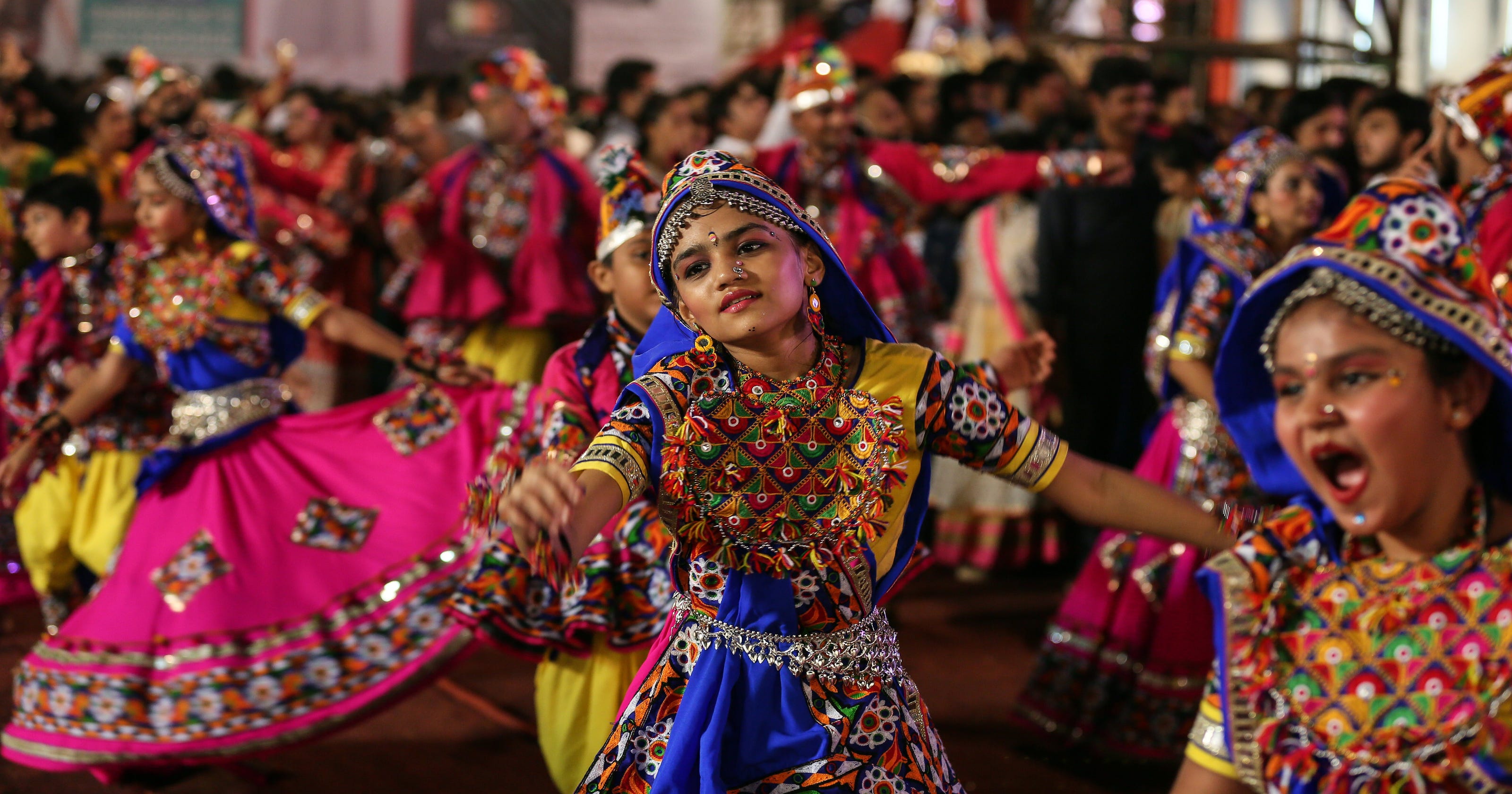
According to some Hindu texts such as the Shakta and Vaishnava Puranas, Navaratri theoretically falls twice or four times a year. Of these, the Sharada Navaratri near autumn equinox (September-October) is the most celebrated and the Vasanta Navaratri near spring equinox (March-April) is next most significant to the culture of Indian subcontinent. In all cases, Navaratri falls in the bright half of the Hindu luni-solar months. The celebrations vary by region, leaving much to the creativity and preferences of the Hindu.
Sharada Navaratri: the most celebrated of the four Navaratri, named after sharada which means autumn. It is observed the lunar month of Ashvin (post-monsoon, September–October). In many regions, the festival falls after autumn harvest, and in others during harvest.
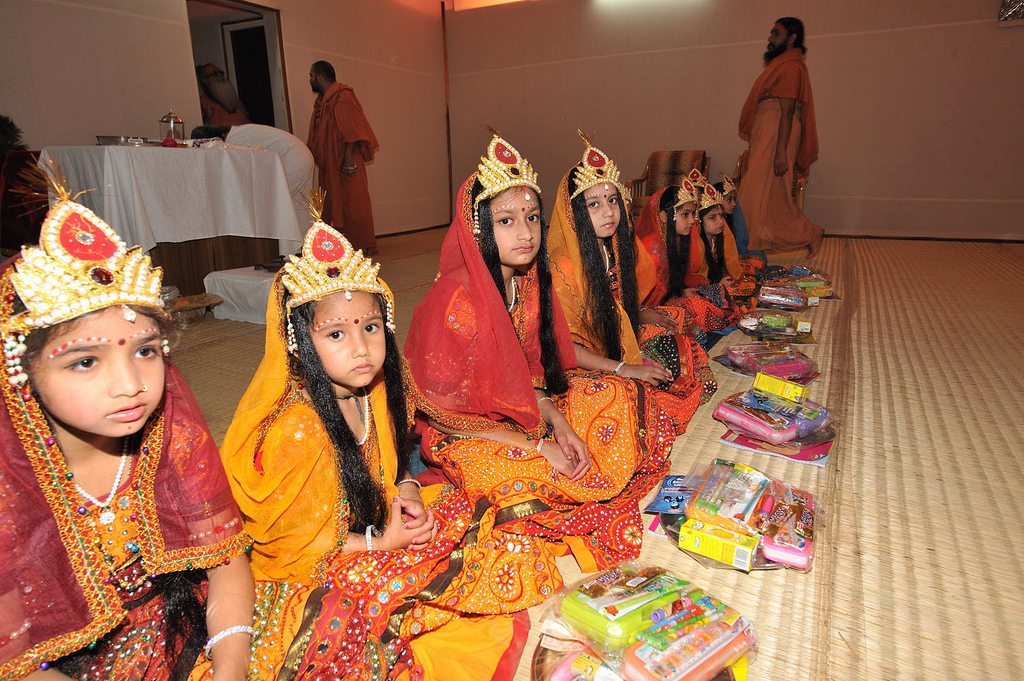 Vasanta Navaratri
Vasanta Navaratri: the second most celebrated, named after vasanta which means spring. It is observed the lunar month of Chaitra (post-winter, March–April). In many regions the festival falls after spring harvest, and in others during harvest.
The other two Navratris are observed regionally or by individuals:
Magha Navaratri: in Magha (January–February), winter season. The fifth day of this festival is often independently observed as Vasant Panchami or Basant Panchami, the official start of spring in the Hindu tradition wherein goddess Saraswati is revered through arts, music, writing, kite flying. In some regions, the Hindu god of love, Kama is revered.
Ashada Navaratri: in Ashadha (June–July), start of the monsoon season.
The Sharada Navaratri commences on the first day (pratipada) of the bright fortnight of the lunar month of Ashvini. The festival is celebrated for nine nights once every year during this month, which typically falls in the Gregorian months of September and October. The exact dates of the festival are determined according to the Hindu luni-solar calendar, and sometimes the festival may be held for a day more or a day less depending on the adjustments for sun and moon movements and the leap year.
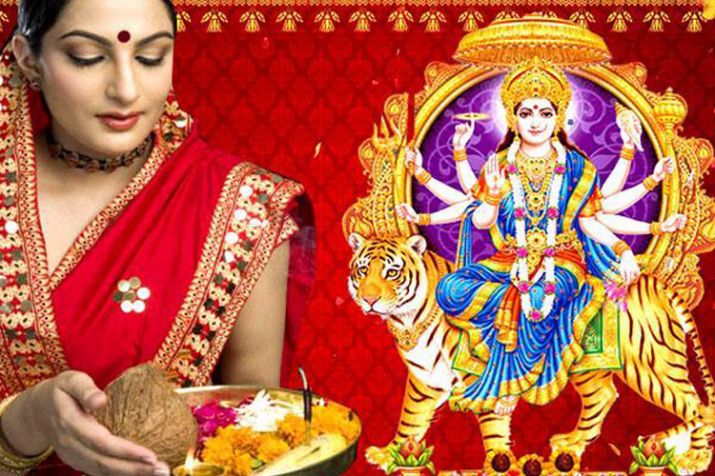
The festivities extend beyond goddess Durga and god Rama. Various other goddesses such as Saraswati and Lakshmi, gods such as Ganesha, Kartikeya, Shiva and Krishna are regionally revered. For example, a notable pan-Hindu tradition during Navaratri is the adoration of Saraswati, the Hindu goddess of knowledge, learning, music, and arts through Ayudha Puja. On this day, which typically falls on the ninth day of Navaratri after the Good has won over Evil through Durga or Rama, peace and knowledge is celebrated. Warriors thank, decorate and worship their weapons, offering prayers to Saraswati. Musicians upkeep their musical instruments, play and pray to them. Farmers, carpenters, smiths, pottery makers, shopkeepers and all sorts of tradespeople similarly decorate and worship their equipment, machinery, and tools of trade. Students visit their teachers, express respect and seek their blessings. This tradition is particularly strong in South India, but is observed elsewhere too.
Significance of Each Day
The festival is associated to the prominent battle that took place between Durga and demon Mahishasura and celebrates the victory of Good over Evil.[18] These nine days are solely dedicated to Goddess Durga and her nine Avatars. Each day is associated to an incarnation of the goddess:
Day 1: Shailaputri - Known as Pratipada, this day is associated to Shailaputri (literally "Daughter of Mountain"), an incarnation of Parvati. It is in this form that the Goddess is worshiped as the consort of Shiva; she is depicted as riding the bull, Nandi, with a trishula in her right hand and lotus in her left. Shailaputri is considered to be the direct incarnation of Mahakali. The color of the day is red, which depicts action and vigor.
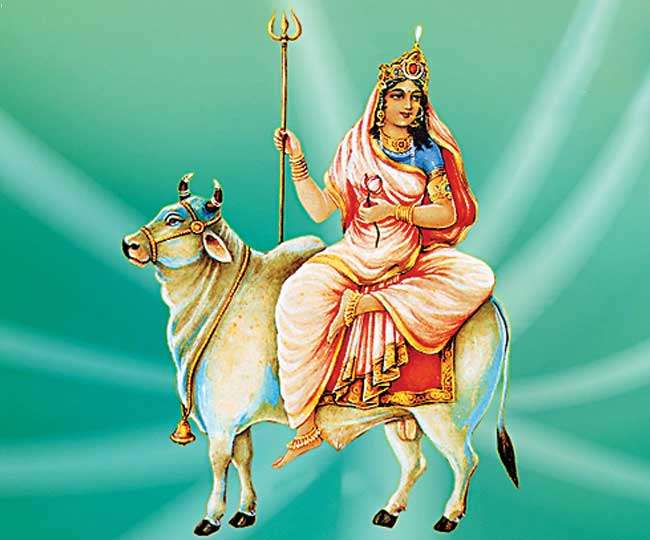 Day 2: Brahmacharini -
Day 2: Brahmacharini - On Dwitiya, Goddess Brahmacharini, another incarnation of Parvati, is worshiped. In this form, Parvati became Sati, her unmarried self. Brahmacharini is worshiped for emancipation or moksha and endowment of peace and prosperity. Depicted as walking bare feet and holding a japamala and kamandal in her hands, she symbolizes bliss and calm. Blue is the color code of this day. Blue colour depicts tranquility yet strong energy.
 Day 3: Chandraghanta -
Day 3: Chandraghanta - Tritiya commemorates the worship of Chandraghanta - the name derived from the fact that after marrying Shiva, Parvati adorned her forehead with half-chandra (lit. moon). She is the embodiment of beauty and is also symbolic of bravery. Yellow is the colour of the third day, which is a vivacious colour and can pep up everyone's mood.
 Day 4: Kushmanda -
Day 4: Kushmanda - Goddess Kushmanda is worshiped on Chaturthi. Believed to be the creative power of universe, Kushmanda associated to the endowment of vegetation on earth and hence, the color of the day is Green. She is depicted as having eight arms and sits on a Tiger.
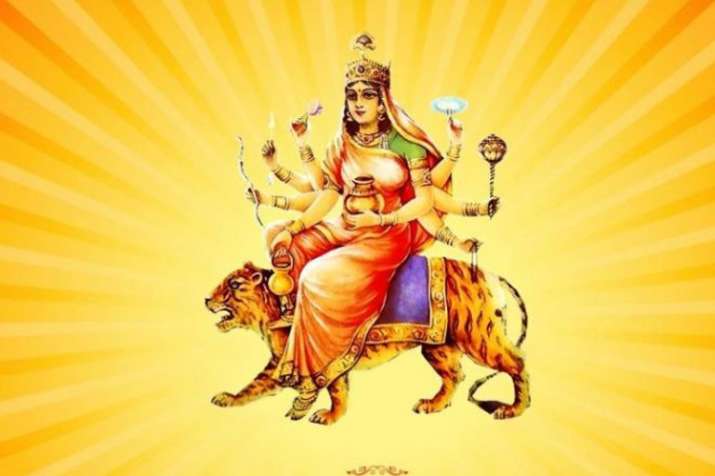 Day 5: Skandmata -
Day 5: Skandmata - Skandamata, the goddess worshiped on Panchami, is the mother of Skanda (or Kartikeya). The color Grey is symbolic of the transforming strength of a mother when her child is confronted with danger. She is depicted riding a ferocious lion, having four arms and holding her baby.
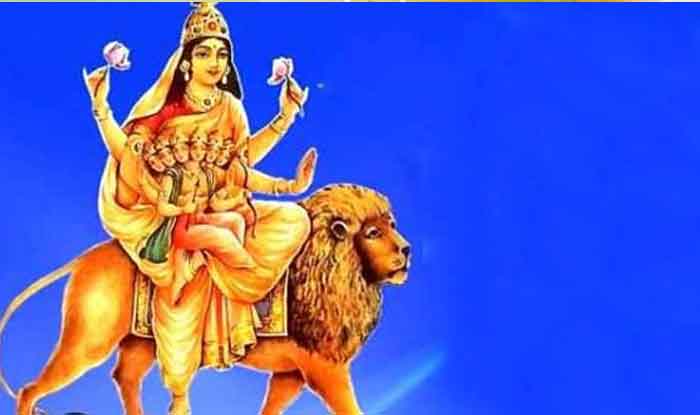 Day 6: Katyayani -
Day 6: Katyayani - Born to a sage, Katyayana, she is an incarnation of Durga and is shown to exhibit courage which is symbolized by the color Orange. Known as the warrior goddess, she is considered one of the most violent forms of Goddess Parvati. In this avatar, Kātyāyanī rides a lion and has four hands.
 Day 7: Kalaratri -
Day 7: Kalaratri - Considered the most ferocious form of Goddess Durga, Kalaratri is revered on Saptami. It is believed that Parvati removed her fair skin to kill the demons Sumbha and Nisumbha. The color of the day is White. On Saptami, the Goddess appears in a white colour attire with a lot of rage in her fiery eyes, her skin turns black. The white colour portrays prayer and peace, and ensures the devotees that the Goddess will protect them from harm.
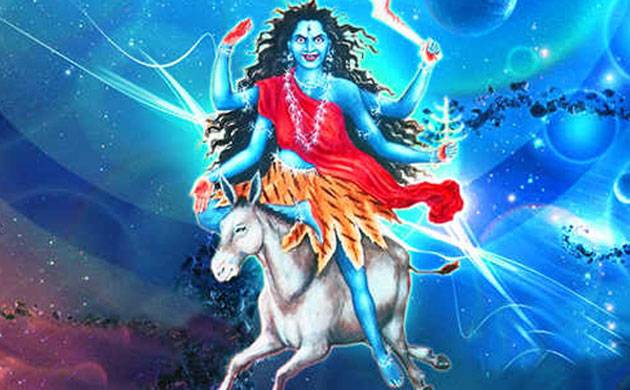 Day 8: Mahagauri -
Day 8: Mahagauri - Mahagauri symbolizes intelligence and peace. The color associated to this day is Pink which depicts optimism.
 Day 9: Sidhidatri -
Day 9: Sidhidatri - On the last day of the festival also known as Navami, people pray to Siddhidhatri. Sitting on a lotus, she is believed to possess and bestows all type of Siddhis. Here she has four hands. Also known as Saraswati Devi. The light blue colour of the day portrays an admiration towards nature's beauty.
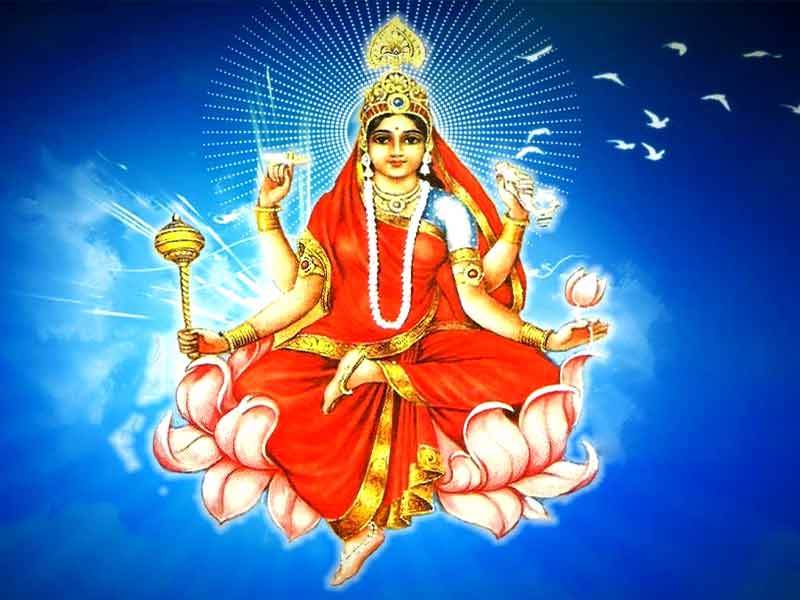 India Tour Packages
India Luxury Tours
India Budget Tours
India Fair & Festival
India Tour Packages
India Luxury Tours
India Budget Tours
India Fair & Festival
